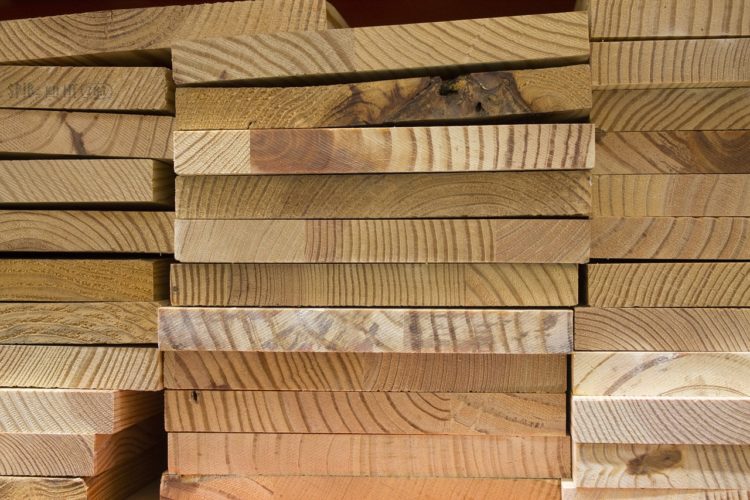The lumber industry is one of the oldest industries in American history. Production and distribution of wood products increased over time due to increased growth of city buildings. Since most forests in the cities were depleted over time, lumbermen started cultivating for more stock from rural areas. Most houses in historic America were made of wood products with a masonry coating to look like stone, but stones were rarely used. To ensure durability, old trees were used for harvesting of timber and challenges such as rotting, or insect harm was overcome using preservatives. The lumber industry has experienced dramatic changes and different challenges over the years due to increased demand for wood products as cities continued to grow. Some of these changes were evident in terms of marketing, transportation or distribution, technology, and building modernizations.
1. Marketing Standardization
While most industries that produce building materials embarked on promoting and advertising their products, the lumber industry did not adopt advertising until the mid-1900s. Most lumber companies started by advertising specific types of woods and marketing was very slow for these companies. Again, different trade organizations could not agree on different issues, and this made it hard for wood manufacturers to work cooperatively. Today, most wood product manufacturers have embraced community service, use of digital marketing strategies and media channels to market their products. Most lumber companies have embraced modern marketing strategies and are targeting cabinet makers, refacing companies, commercial millwork shops, and construction companies because they all need their products to complete their projects. For instance, waterfront companies will need dock material made of timber for their decking projects because it is one of the developments that add value to waterfront properties.
2. Distribution and Transportation Of Lumber Products
Distribution channels for the lumber industry have always been complex, and the networks involved poorly integrated. There were numerous middlemen, and the variation between the regional and local standards made the industry more complicated. This led to increased costs for delivering goods from manufacturer to wholesalers, from retailers to railroad and wholesalers to railroad and between everyone else and the consumer. Transportation was a big challenge as well, and most lumberyards had to be located near rail lines or harbors to allow easy delivery of wood products. Today, lumber companies are found anywhere because transportation means are available everywhere. Supply channels in the industry have been revolutionized by technology advancement and globalization whereby communication has been made more effective, and travel or transportation of goods has been made easier.
3. Use of Technology in The Lumber Industry
Technology is changing all industries in one way or another, and the lumber industry is not left behind. Due to the challenges faced earlier in marketing, production, and distribution, a need to embrace technology in different operations has considerably increased. Here are some of the areas where technology has shaped production in the lumber industry.
• Sawmilling
Previously, lumber companies were using personal judgment to decide on yields expected from certain material. However, with modern techniques, people are using qualitative and quantitative data to produce cutting patterns of materials automatically. Products depend on the needs of the client after analysis of the data input is complete. Such techniques are expected to improve quality, reduce wastages of materials and improve business competitiveness.
• Drying
Drying of wood products has been modernized through vacuum drying and high-frequency heating, which are techniques that allow fast drying of both hardwoods and softwoods. The good thing about these technologies is the fact that they can be adjusted to the need and urgency of the products being produced. People were using the kiln dryer previously, and it has proven to be slow and less effective especially with the increased demand for wood products. This is one of the reasons why several solvents and emulsion systems have been developed for non-water-soluble constituents.
• Wood Treatment and Preservation
Most of the products that have been used for wood preservation were considered environmental unfriendly, and therefore a need for more efficient and sustainable strategies arose. More research is being carried out to come up with alternative solutions to improve margins of preservation. Most companies dealing with decking projects would consider properly treated dock material because of the heightened exposure to water.
• Development of Reconstituted Wood
Production of different types of boards has led to increased demand for composites and reconstituted wood products. For instance, plywood is a special wood product that needs high-quality wood to be complete while fiberboard or particle board only requires fragmented wood to produce. This means that after producing some quality timber products, one can use the byproducts produced in the process to produce other important products. Both the main product and the byproducts are made more durable through chemical treatments that help in sticking different parts and particles together. For example, sawdust can be mixed with plastic to produce plastic wood composites that are more resistant and partially biodegradable.
Change is inevitable, and every company needs to adapt to the changes that come in the industry, and this will help them to remain relevant. The lumber industry is one that has experienced dramatic changes over the years for improved efficiency.
